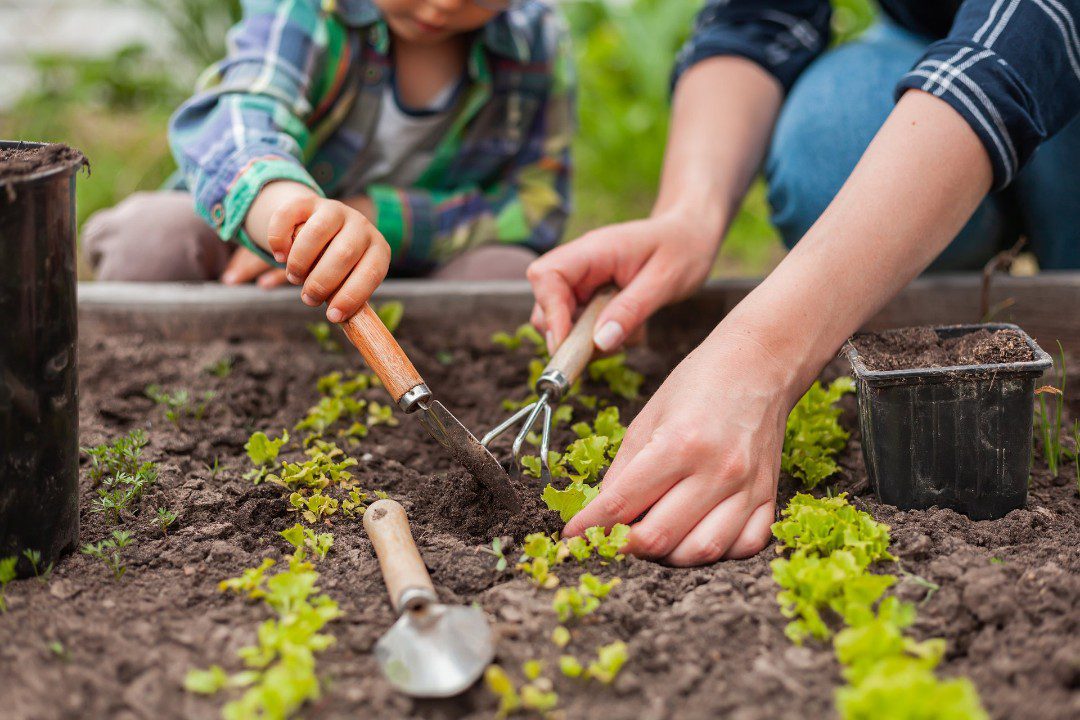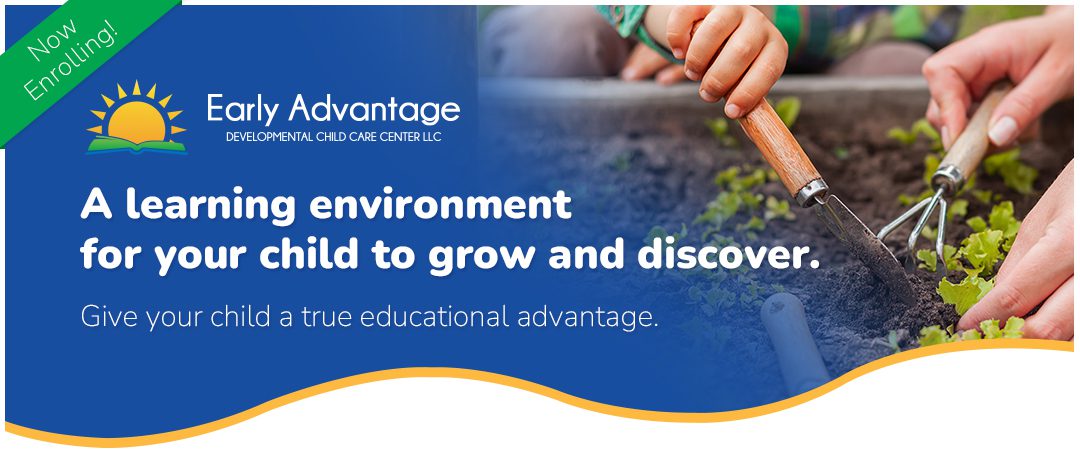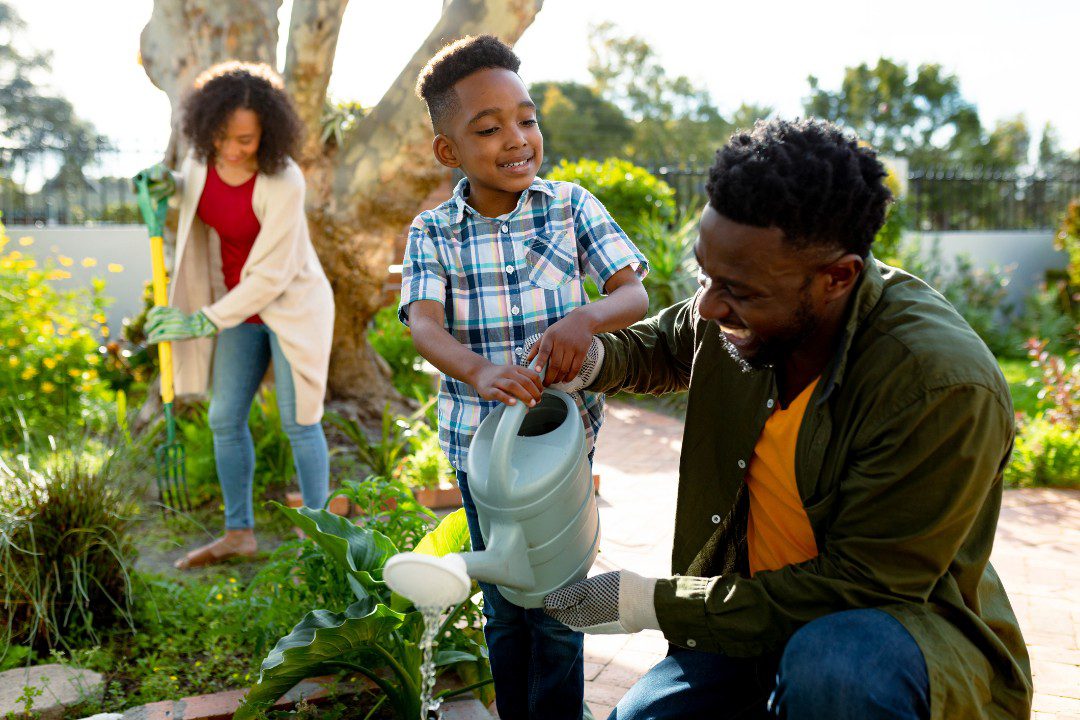Gardening with young children offers far more than just outdoor play.
It is also a hands-on way to foster physical activity, patience, and a deeper connection to the environment.
Whether you’re planting seeds in a backyard plot or growing herbs in a window box, gardening with kids is a simple, joyful practice that supports early childhood development in meaningful ways.
How Gardening Supports Child Development
The garden is a natural classroom. As children dig, plant, water, and harvest, they engage in physical activity that builds fine and gross motor skills.
Digging, carrying watering cans, and pulling weeds strengthen upper and lower body coordination. At the same time, the focus required to gently plant a seedling teaches children patience and concentration.
Cognitive and emotional benefits are just as important. Gardening teaches children to observe and predict, helping them understand the life cycle of plants.
Watching a tiny seed grow into a blooming flower or a vegetable they can eat gives children a sense of pride and accomplishment. It’s also an opportunity to introduce concepts in math and science through our educational curriculum.
Children can count seeds, measure plant growth, and learn about weather, soil, and insects through firsthand experience.
Social and emotional skills bloom in the garden as well. Working side by side with a parent or caregiver strengthens bonds and encourages communication. Learning to care for a living thing helps children develop empathy and responsibility.

Starting a Child-Friendly Garden
You don’t need a large yard or professional tools to garden with children. A few containers on a balcony or a small corner of a yard is plenty to get started.
Keep things simple and set realistic expectations. The garden is not a showcase, but a living, learning space for exploration.
Start by choosing plants that are safe and easy to grow. For a flower garden, annuals like marigolds, petunias, and zinnias provide quick, colorful results.
In vegetable gardens, try planting beans, cucumbers, or cherry tomatoes—plants that sprout quickly and are fun to harvest. Include your child in decisions about what to plant and where.
Here are a couple quick tips:
- Prepare the soil together, allowing your child to dig, mix in compost, and get their hands dirty.
- Use child-sized tools and watering cans to help them take part in daily tasks.
By involving your child in every step, from preparing the garden site to watering and harvesting, you’re building confidence and encouraging independence.
Mistakes will happen, and that’s part of the process. A seed might not sprout, a plant may wilt—but each experience is a lesson in problem-solving and resilience.
Gardening in Small Spaces
If you’re short on outdoor space, container gardening is a fantastic alternative. A few pots on a sunny patio or windowsill can support herbs, flowers, or even vegetables.
Nasturtiums, for example, are easy to grow, edible, and attract pollinators. Herbs like dill, parsley, and fennel not only season food but can also serve as host plants for caterpillars, offering a chance to observe the life cycle of butterflies.
Window boxes and raised beds are excellent child-friendly options. Preschoolers enjoy watching plants cascade over containers and harvesting herbs for meals.
These small gardens are not only practical but educational, providing daily opportunities for children to interact with the natural world.

Teaching Environmental Awareness
Gardening is a natural introduction to sustainability and stewardship. Composting kitchen scraps, avoiding pesticides, and caring for pollinators are all practices that can be taught as part of the gardening routine.
Children learn that their actions have an impact on the environment and that nurturing plants is one way to help the planet.
Over time, gardening encourages children to develop their sense of responsibility. They see that plants need care, just like pets or people.
They learn about the balance of nature, the importance of bees and other pollinators, and how weather patterns affect crops. These lessons lay a foundation for lifelong environmental awareness through integrated learning programs like Frog Street.

A Lasting Impact
The benefits of gardening for children extend far beyond the growing season. Gardening promotes physical activity, supports early childhood education, and strengthens family bonds.
It provides a routine that brings comfort and teaches valuable life skills. Above all, it fosters a lifelong connection to nature.
Whether you’re planting seeds in the ground or growing herbs in containers, the garden is a place where children can learn, grow, and thrive.
Start small, enjoy the process, and celebrate each new leaf, sprout, or bloom as a shared success.
Gardening with young children is more than an activity—it’s a way to nurture their minds, bodies, and hearts. Schedule a tour to learn more.

